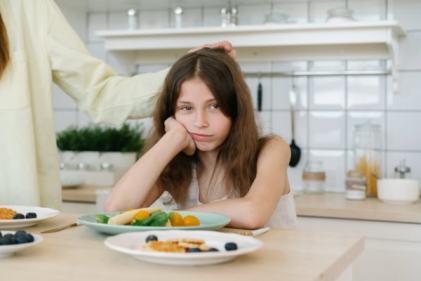For children ages five and older, experts recommend that a child consumes between 1,200 and 2,000 (teenager) calories per day depending on their age and his activity level. Here is a list of examples on how your child should be getting in all five food groups.
Grains
Grains are a great source of fibre, which aids digestion, andare rich in complex carbohydrates which are needed to provide energy. Grains are also a terrific source of B vitamins. Some fortified ready-to-eat breakfast cereals provide significant sources of essential vitamins and minerals like calcium and iron. Here are some examples of portion sizes of foods in this food group:
- A slice of whole-wheat bread
- whole-wheat crackers
- Wholewheat rice or pasta
- 1 bowl of fortified cereal
Vegetables and fruits
Vegetables and fruits are a wonderful source of fibre, along with vitamins C, A and potassium. Most vegetables contain antioxidants which which have health giving properties. Here are some examples of portion sizes in this food group:
- Medium apple
- 2 small plums
- Cooked broccoli spears
- Cooked spinach
- Mangetout
- 1 heaped dessert spoon of raisins
- Small glass of orange juice
- 10-12 blueberries
- Small bananas
Milk
Dairy products are one of the best sources of calcium, which is needed to help your child develop strong teeth and bones. Dairy products are also an excellent source of protein, which is particularly important if your child doesn't eat meat. Here are some examples of portion sizes:
- 200ml glass of milk
- Tub of yoghurt
- 25g of cheese
- A portion of milk pudding
From the age of one, cow’s milk can replace formula or breast milk. Use full fat milk and yoghurts for toddlers, semi skimmed can be given after the age of 2 years if the rest of the diet contains enough energy.
Meat and beans
This category refers to all foods that provide protein and can include meat, beans, fish, eggs and nuts. These foods are an excellent source of iron, zinc and certain B vitamins for your child.
Examples of portion sizes in this food group include:
- 1 eggs limit to 7 per week.
- 40g of peanut butter
- 6 dessert spoons of cooked beans or lentils
- 50-70g of cooked chicken or other meats
- 100g of fish
- 100g tofu
Fats and sweets
Use sparingly
Your child’s diet should be similar to that of an adult when it comes to fat. Therefore, no more than 35% of calories should come from fat. You should try to limit your child’s fat intake and in addition because you want to leave room for nutritious foods, don’t let him fill up on sweets.
Read more: 20 healthy snack suggestions












